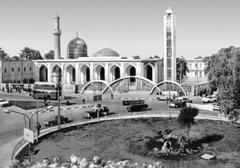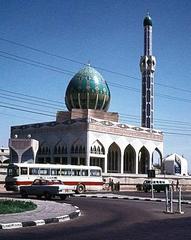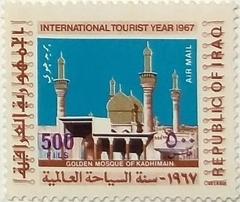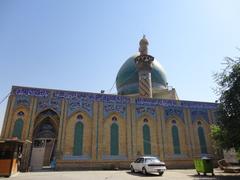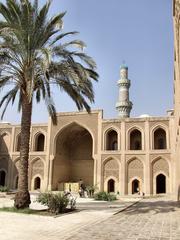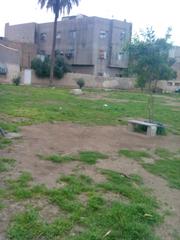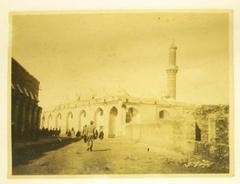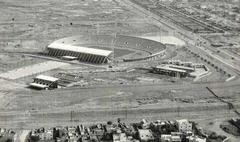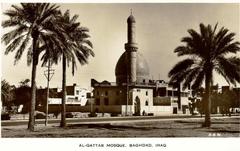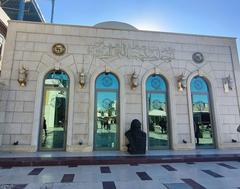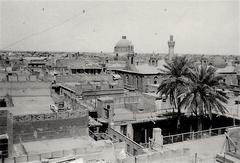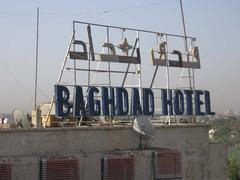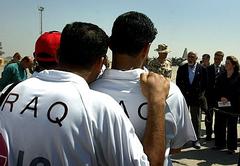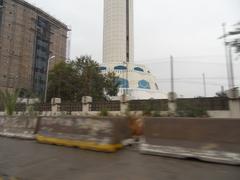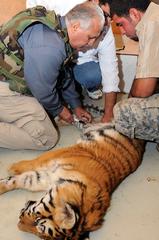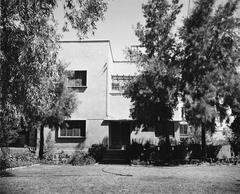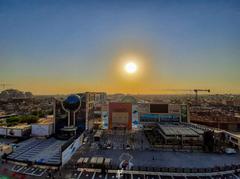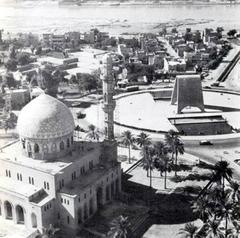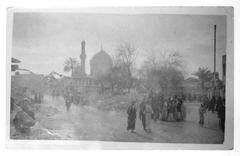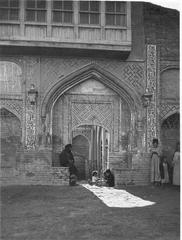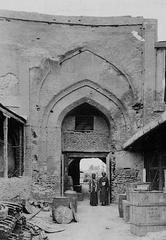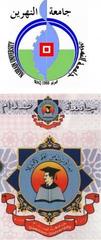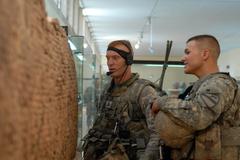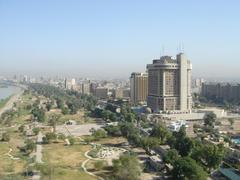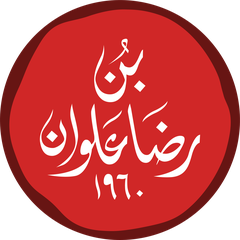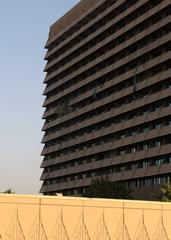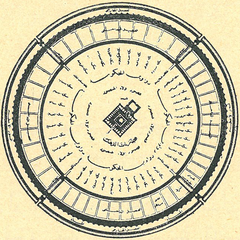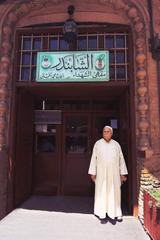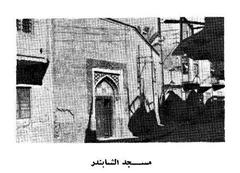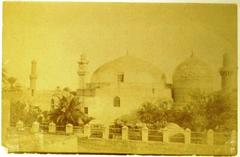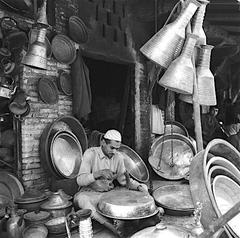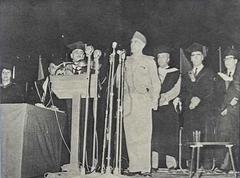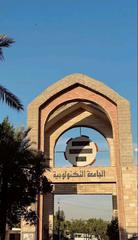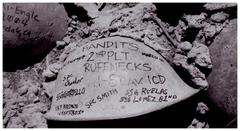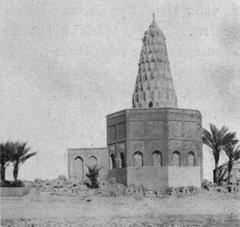Ahmad Ibn Hanbal Mosque: Visiting Hours, Tickets, and Historical Significance in Baghdad
Date: 14/06/2025
Introduction
The Ahmad Ibn Hanbal Mosque stands as a vital religious and cultural landmark in Baghdad’s historic Al-Rusafa district. Revered as the burial site of Imam Ahmad ibn Hanbal—one of Islam’s most influential scholars and the founder of the Hanbali school of Sunni jurisprudence—the mosque attracts worshippers, students, and history enthusiasts alike. Its enduring legacy is reflected not only in its spiritual significance but also in its architectural evolution, role in the community, and status as a symbol of Baghdad’s layered Islamic heritage. This guide provides detailed insights into the mosque’s history, visiting hours, ticketing, etiquette, accessibility, and travel tips to enrich your experience (Wikipedia; The Muslim Vibe; IQRA Network).
Historical Background and Legacy
Life and Legacy of Imam Ahmad ibn Hanbal
Born in Baghdad in 780 CE, Ahmad ibn Hanbal was raised in a city renowned for its intellectual vibrancy during the Abbasid Caliphate (Wikipedia). Orphaned as an infant, he was brought up by his mother, who instilled in him a deep commitment to religious knowledge. He studied under prominent scholars, including Abu Yusuf and Imam al-Shafi‘i, acquiring expertise in hadith and Islamic jurisprudence (IslamOnline).
Ahmad’s relentless pursuit of knowledge led him across the Islamic world—Basra, Kufa, Mecca, Medina, Yemen, and Syria—where he memorized thousands of prophetic traditions. His scholarly rigor and humility set a standard for subsequent generations (IslamWeb).
Resistance during the Mihna
Imam Ahmad’s most defining moment was his stand during the Mihna (Inquisition), when Abbasid authorities sought to impose the Mu‘tazilite doctrine regarding the createdness of the Qur’an. Ahmad’s refusal, despite imprisonment and torture, established him as a defender of orthodoxy and independence from state interference in religious matters (Britannica).
Founding the Hanbali School
Ahmad ibn Hanbal’s legacy culminated in the formation of the Hanbali school—one of four major Sunni madhabs—emphasizing strict adherence to the Qur’an and authentic hadith, and exercising caution in analogical reasoning (IQRA Network). His magnum opus, the “Musnad Ahmad ibn Hanbal,” remains a cornerstone of hadith literature (Wikipedia).
Final Resting Place
Imam Ahmad died in 855 CE, and his funeral became a legendary event, said to have drawn immense crowds. He was interred in what is now the Ahmad Ibn Hanbal Mosque, which became a site of pilgrimage and scholarly activity (The Muslim Vibe).
The Mosque: Architecture and Preservation
Architectural Features
The mosque, originally constructed over Imam Ahmad’s grave, has undergone several reconstructions, notably during the Ottoman era and a major restoration in 1998 (IRQ Now). The complex features:
- Mausoleum Chamber: Houses the tomb of Imam Ahmad, crowned by a prominent dome.
- Prayer Hall & Courtyard: The main prayer area aligns with the qibla, with the mausoleum accessible via arcades.
- Minaret: Integrates Ottoman and Abbasid design elements.
- Decorative Details: Includes muqarnas vaulting, Quranic calligraphy, and geometric motifs.
- Materials: Uses brick, stone, and reinforced concrete, blending tradition with modern durability.
Preservation Efforts
Managed by the Sunni Endowment Office since 2003, ongoing maintenance addresses climate impacts and security, with community involvement supporting the mosque’s heritage (IRQ Now).
Visiting Information
Location and Access
- District: Al-Rusafa, Baghdad (Coordinates: 33.3444125, 44.3881406) (Evendo)
- Getting There: Accessible by taxi, car (with GPS navigation), or public transport. Taxis are recommended for convenience and safety.
Visiting Hours
- General Hours: Daily from 7:00 AM – 7:00 PM (may vary during religious holidays or special events).
- Best Times: Outside main prayer times and Fridays for a quieter experience.
Entry and Tickets
- Admission: Free; no ticket required. Donations for maintenance are appreciated.
Guided Tours
- Availability: Local guides can be hired on-site or through Baghdad’s tourism office. No official guided tour program, but guides offer rich historical and architectural context.
Accessibility
- Facilities: Basic wheelchair access at main entrances; some uneven flooring and steps. Restroom facilities are basic.
- Mausoleum: Can accommodate up to 30 visitors at a time.
Dress Code and Visitor Etiquette
- Attire: Modest, loose-fitting clothes covering arms and legs. Women must cover hair with a scarf (Blue Mosque Guide).
- Footwear: Remove shoes before entering prayer areas.
- Behavior: Maintain silence and reverence; seek permission before photographing people or prayer activities. Respect gender-segregated areas.
Cultural Engagement and Events
- Religious Functions: Daily prayers, Friday congregations, and commemorative events (especially on Imam Ahmad’s anniversary).
- Educational Activities: Lectures, Quranic recitations, and discussions on Islamic law.
- Community: The mosque serves as a hub for religious education and community gatherings (IslamOnline).
Nearby Attractions
- Al-Kadhimiyah Mosque
- Abbasid Palace
- Baghdad Museum
- Tigris River Promenade
All are accessible by taxi or public transport from the mosque’s location.
Photography and Visuals
- Best Spots: Courtyard, domed mausoleum, and main prayer hall—especially during morning or late afternoon light.
- Permissions: Always ask before photographing worshippers or during prayers.
Alt text: Exterior view of Ahmad Ibn Hanbal Mosque in Baghdad
Alt text: Interior prayer hall of Ahmad Ibn Hanbal Mosque with worshippers
Interactive Map of Baghdad Historical Sites
Virtual Tour of Ahmad Ibn Hanbal Mosque
Frequently Asked Questions (FAQ)
Q: What are the visiting hours of Ahmad Ibn Hanbal Mosque?
A: Generally open daily from 7:00 AM to 7:00 PM; check locally during holidays.
Q: Is there an entry fee or ticket required?
A: No, entry is free.
Q: Are guided tours available?
A: Yes, through local guides; inquire on site or via the tourism office.
Q: What is the dress code?
A: Modest clothing with arms and legs covered; women should cover their hair.
Q: Is the mosque wheelchair accessible?
A: Basic accessibility at main entrances; some areas may be difficult to navigate.
Q: Are non-Muslims allowed to visit?
A: Yes, typically outside main prayer times; confirm locally.
Practical Travel Tips
- Visit outside peak prayer times for a quieter experience.
- Bring a scarf (for women) and socks.
- Carry water but consume it outside the mosque.
- Use navigation apps due to limited street signage.
- Stay informed on travel advisories and consider a local guide for safety.
- Respect local customs and community traditions.
Summary and Recommendations
The Ahmad Ibn Hanbal Mosque offers a profound connection to Baghdad’s spiritual, intellectual, and architectural legacy. As a living monument to Imam Ahmad ibn Hanbal, the mosque serves as a center for worship, education, and community engagement. With free admission, accessible visiting hours, and nearby cultural attractions, visitors can immerse themselves in Iraq’s vibrant heritage. Preservation efforts continue to safeguard this site for future generations. For the most current information and personalized travel tips, download the Audiala app and consult official tourism resources (IRQ Now; IslamOnline; The Muslim Vibe).
References and Further Reading
- Ahmad ibn Hanbal - Wikipedia, 2024
- Ahmad ibn Hanbal: Imam of Ahl as-Sunnah - IslamOnline, 2024
- The Life of Imam Ahmad ibn Hanbal - OnePath Network, 2024
- Imam Ahmad ibn Hanbal - IslamWeb Fatwa, 2024
- Ahmad ibn Hanbal - Britannica, 2024
- A Short Biography of Imam Ahmad ibn Hanbal (778–855AD) - The Muslim Vibe, 2024
- Imam Ahmad ibn Hanbal: The Defender of Faith and Hadith - IQRA Network, 2024
- Iraqi Mosques - IRQ Now, 2024
- Baghdad Travel Guide - Adventures of Lil Nicki, 2024
- Visiting the Shrine of Ahmad Ibn Hanbal - Evendo, 2024
- How to Dress Appropriately When Visiting Mosques - Blue Mosque Guide, 2024
- Biography of Imam Hanbal - Islamic Info Center, 2024
